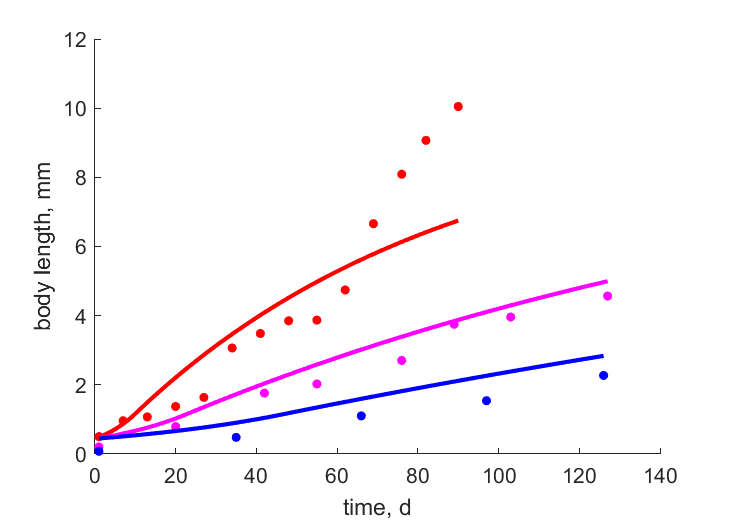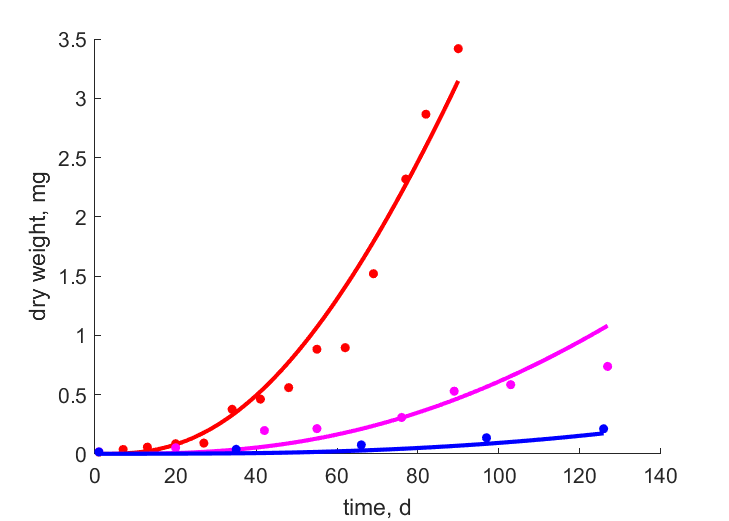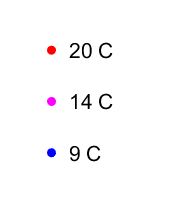Predictions & Data for this entry
| Model: hep | climate: Cfb, Dfb, Dfc | migrate: | phylum: |
| COMPLETE = 2.5 | ecozone: TH | food: beH, beD, beS | class: |
| MRE = 0.191 | habitat: 0eFr, 0eFc, eiTg | gender: D | order: |
| SMSE = 0.075 | embryo: Fs | reprod: Os | family: |
Zero-variate data
| Data | Observed | Predicted | (RE) | Unit | Description | Reference |
|---|---|---|---|---|---|---|
| ab | 25 | 16.81 | (0.3278) | d | age at birth | Hump1984 |
| tj | 90 | 98.63 | (0.09585) | d | time since at birth at emergence | Hump1984 |
| am | 6 | 5.989 | (0.001751) | d | life span as imago | guess |
| Lj | 1 | 0.7077 | (0.2923) | cm | max body length nymph | Hump1981 |
| Li | 1.5 | 1.498 | (0.001389) | cm | body length imago | MacaBenn2010 |
| Wd0 | 0.0006 | 0.0006277 | (0.04616) | mg | initial dry weight | Wata1998, guess |
| Wdj | 2 | 2.303 | (0.1515) | mg | ultimate dry weight | Hump1981 |
| Ni | 2500 | 2356 | (0.05758) | # | cumulative # of eggs | riverflies, MacaBenn2010 |
Uni- and bivariate data
| Data | Figure | Independent variable | Dependent variable | (RE) | Reference |
|---|---|---|---|---|---|
| tL_20 |   | time | body length | (0.2525) | Hump1981 |
| tL_14 |   | time | body length | (0.1455) | Hump1981 |
| tL_9 |   | time | body length | (0.5054) | Hump1981 |
| tW_20 |   | time | dry weight | (0.1563) | Hump1981 |
| tW_14 |   | time | dry weight | (0.2926) | Hump1981 |
| tW_9 |   | time | dry weight | (0.3891) | Hump1981 |
| Tab |  | temperature | age at birth | (0.2191) | Hump1984 |
Pseudo-data at Tref = 20°C
| Data | Generalised animal | Ecdyonurus dispar | Unit | Description |
|---|---|---|---|---|
| v | 0.02 | 0.002203 | cm/d | energy conductance |
| p_M | 18 | 1417 | J/d.cm^3 | vol-spec som maint |
| k_J | 0.002 | 0.002 | 1/d | maturity maint rate coefficient |
| k | 0.3 | 0.006209 | - | maintenance ratio |
| kap | 0.8 | 0.5624 | - | allocation fraction to soma |
| kap_G | 0.8 | 0.8083 | - | growth efficiency |
| kap_R | 0.95 | 0.95 | - | reproduction efficiency |
Discussion
- Life span (and h_a) relates to imago
- Puberty is assumed to coincide with end of acceleration
Facts
- Imagos are extremely short lived and do not feed; nyphs allocate to reproduction buffer and have mature eggs (Ref: Sold1979)
- Estimates of the number of instars in ephemeropterans vary between 10 and 50; most are in the range 15-25 (Ref: Brit1982)
- Final emphemeropteran larval stage transforms into a flying sub-image, which moulds into an imago (Ref: Brit1982)
- eggs have a dormant period; length grows by a fixed fraction over moulting (so Dyar rule is applicable); eggs can develop parthenogenetically (Ref: Hump1981)
Bibliography